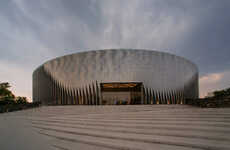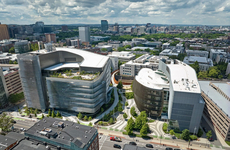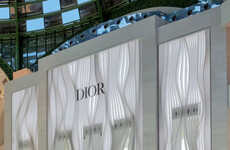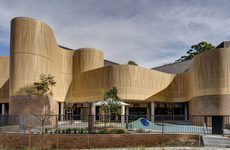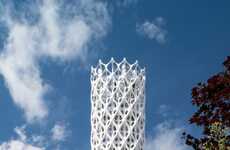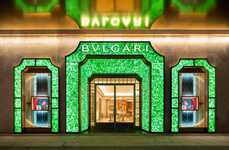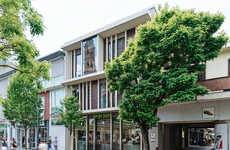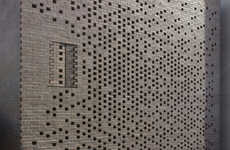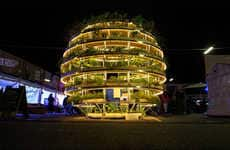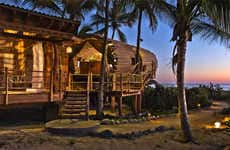
Claudio Vilarinho's Facade Takes Inspiration from Solar Panel Molecules
Joey Haar — November 3, 2016 — Art & Design
References: claudiovilarinho & dezeen
Architect Claudio Vilarinho has designed a unique facade for a building on Minho University's Azurem Campus. The Institute of Science and Innovation for Bio-Sustainability building is devoted to studying and developing environmentally friendly technologies, and its facade takes that purpose as its inspiration.
Claudio Vilarinho's facade design comprises a series of oblong perforations that extend out from the pale green cement. These shapes are similar to the shapes of molecules used in efficient solar panels. These titanium nanotubes, as the technology is called, are believed to be more efficient than standard silicon solar cells.
Beyond the environmental inspiration, the facade offers a practical purpose. The perforations provide people walking through the halls and along the balconies with a view of the trees that surround the northern Portuguese campus.
Claudio Vilarinho's facade design comprises a series of oblong perforations that extend out from the pale green cement. These shapes are similar to the shapes of molecules used in efficient solar panels. These titanium nanotubes, as the technology is called, are believed to be more efficient than standard silicon solar cells.
Beyond the environmental inspiration, the facade offers a practical purpose. The perforations provide people walking through the halls and along the balconies with a view of the trees that surround the northern Portuguese campus.
Trend Themes
1. Molecular-inspired Facades - Opportunities to design buildings with facades inspired by molecular structures, including the use of efficient solar panel nanotube designs.
2. Environmentally-friendly Architecture - Potential developments in environmentally-friendly building materials and designs that promote bio-sustainability.
3. Functional Aesthetics - Incorporating practical purposes for building designs that also promote a visually pleasing facade, such as providing views of the surrounding environment.
Industry Implications
1. Architecture - Incorporating molecular-inspired facades using efficient solar panel nanotube designs, as well as exploring environmentally-friendly building materials and designs.
2. Renewable Energy - Developing more efficient solar panel nanotube designs based on molecular structures for broader use in the renewable energy industry.
3. Higher Education - Further research and development of environmentally friendly technologies, with the potential to incorporate functional aesthetic designs, for use in educational facilities, specifically those focused on science and innovation for bio-sustainability.
2.6
Score
Popularity
Activity
Freshness

